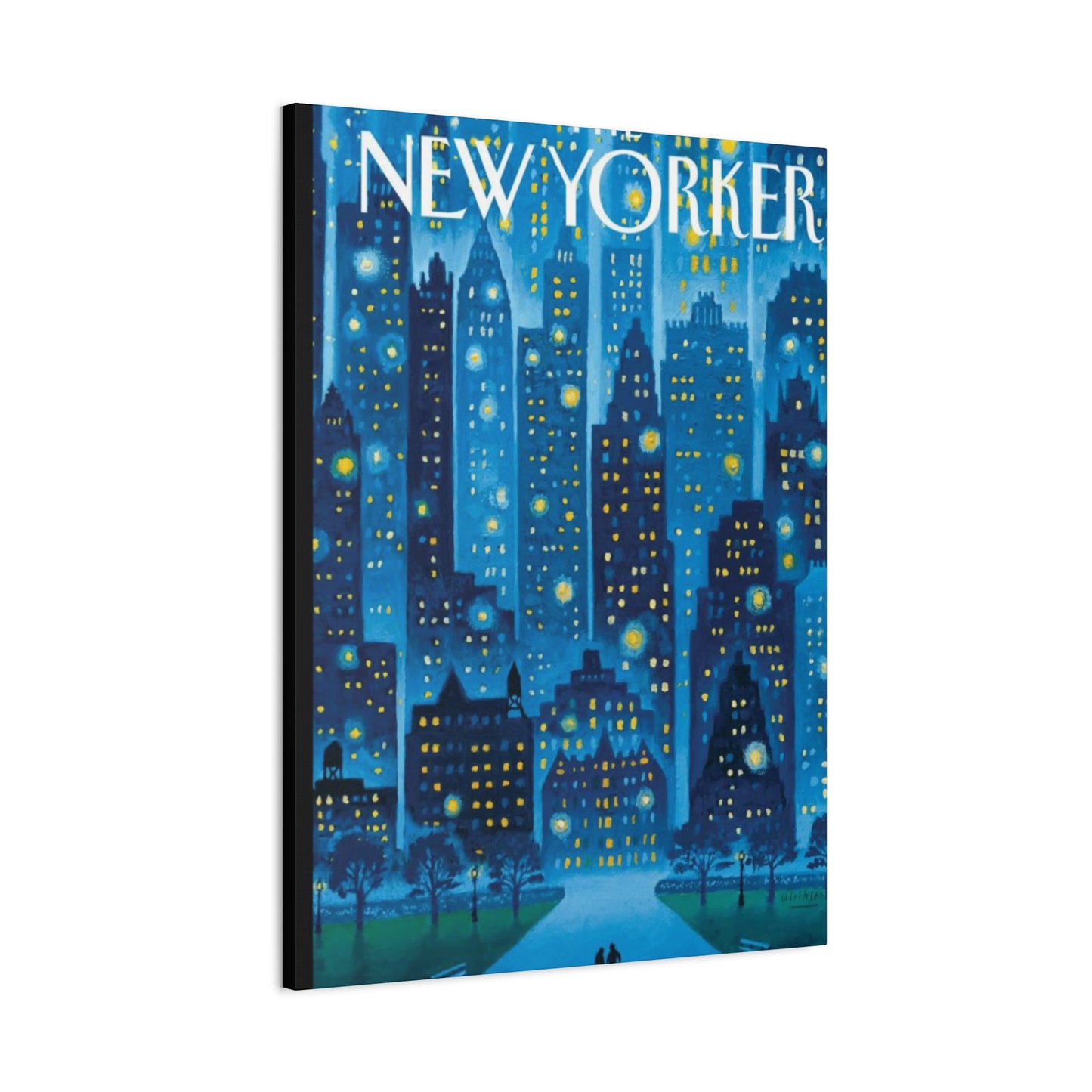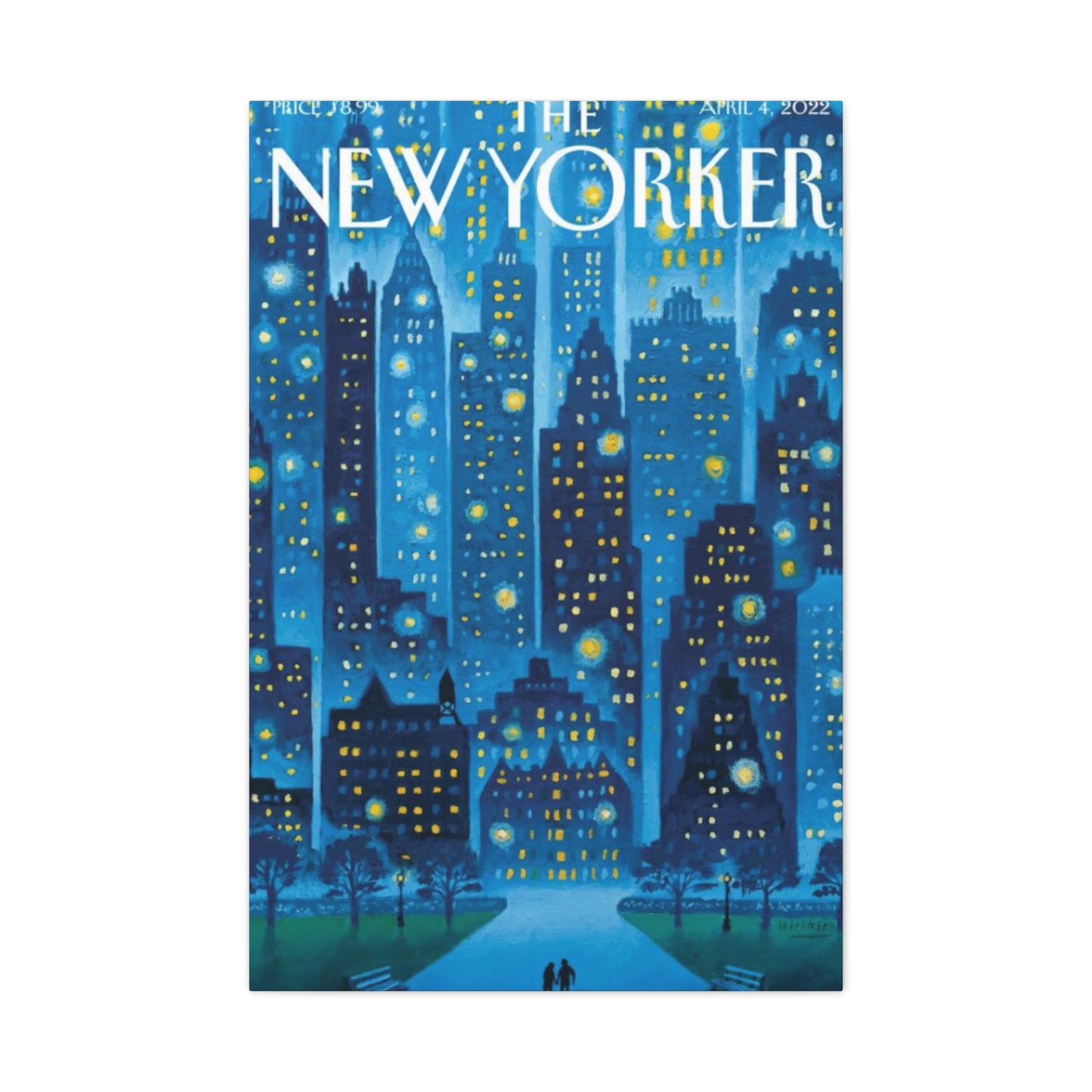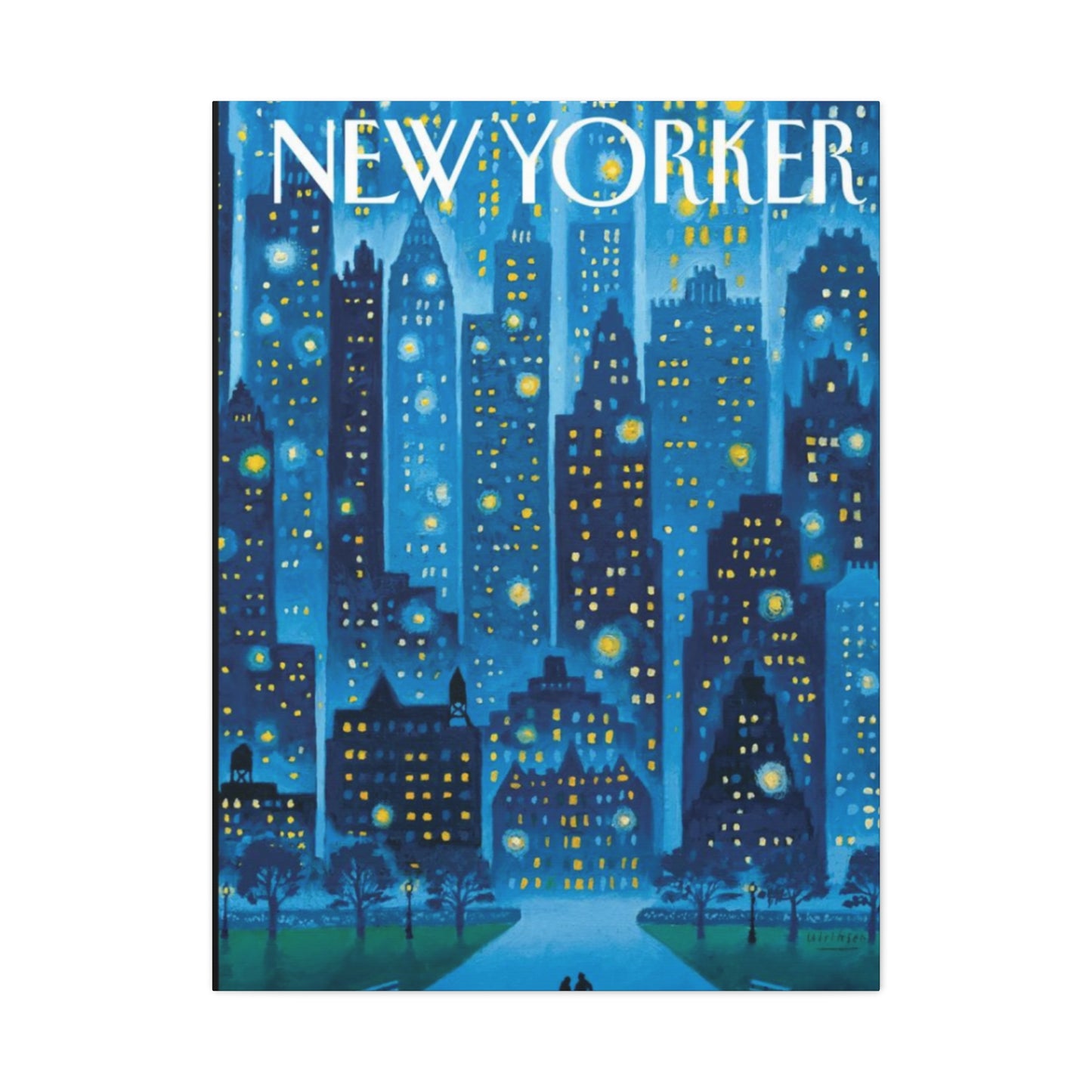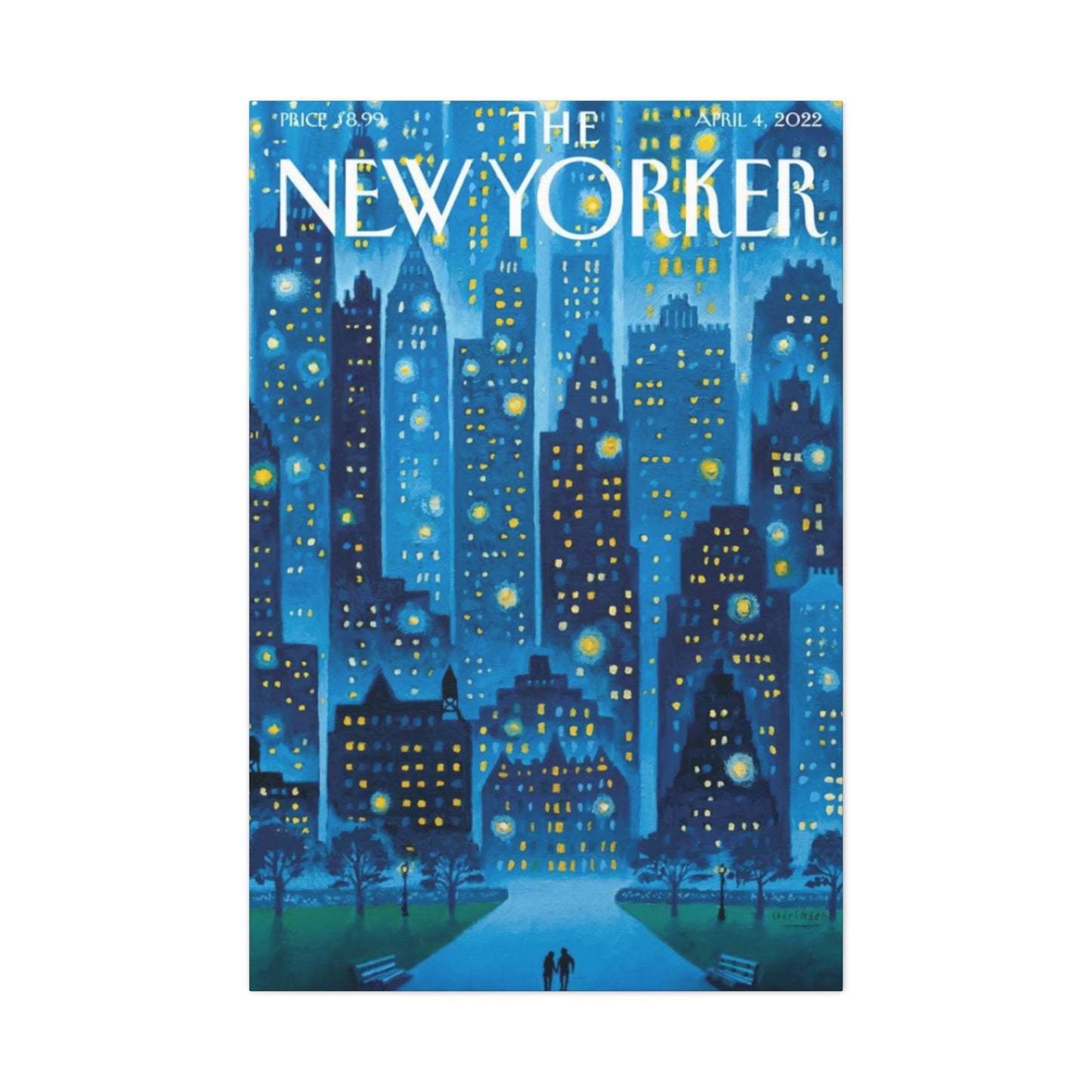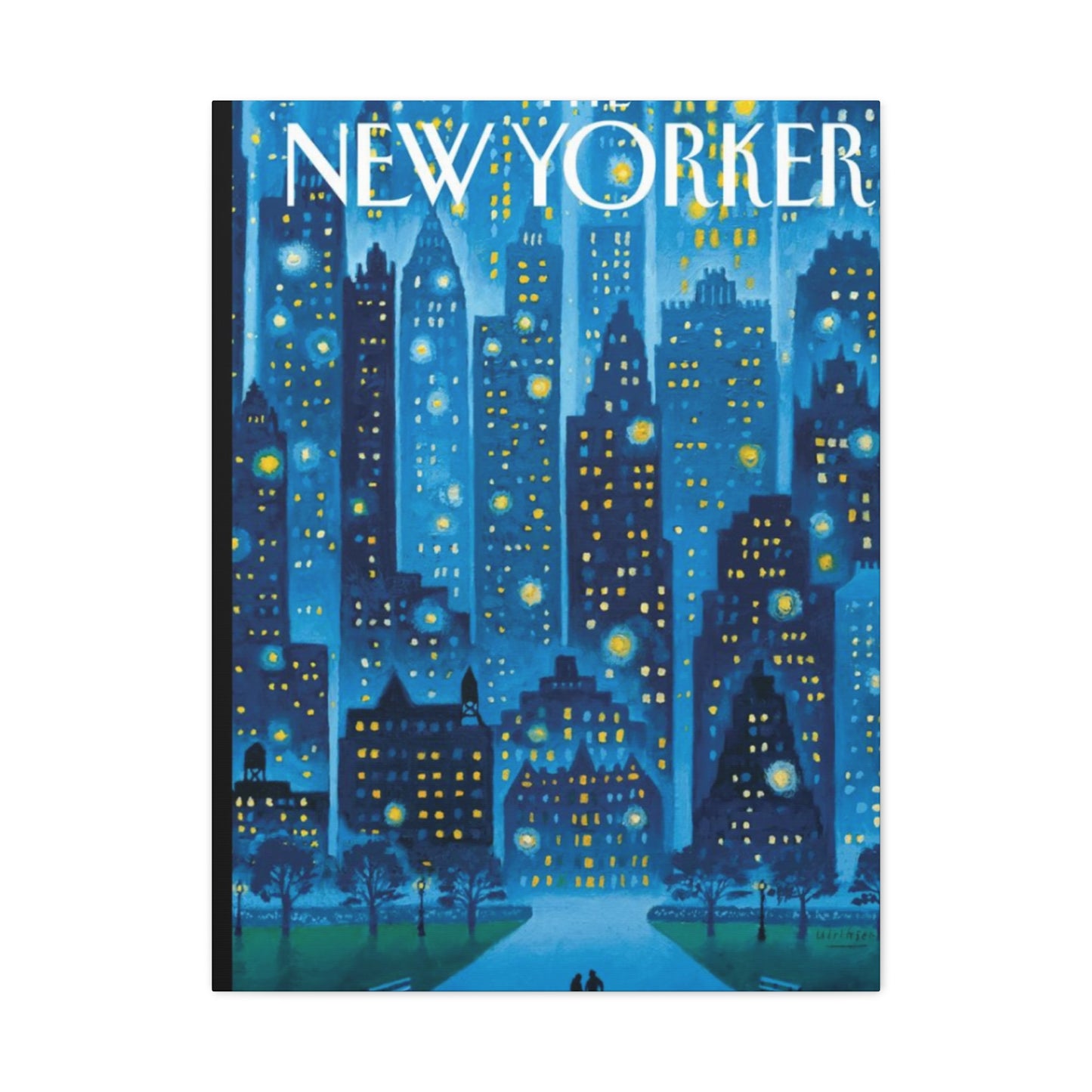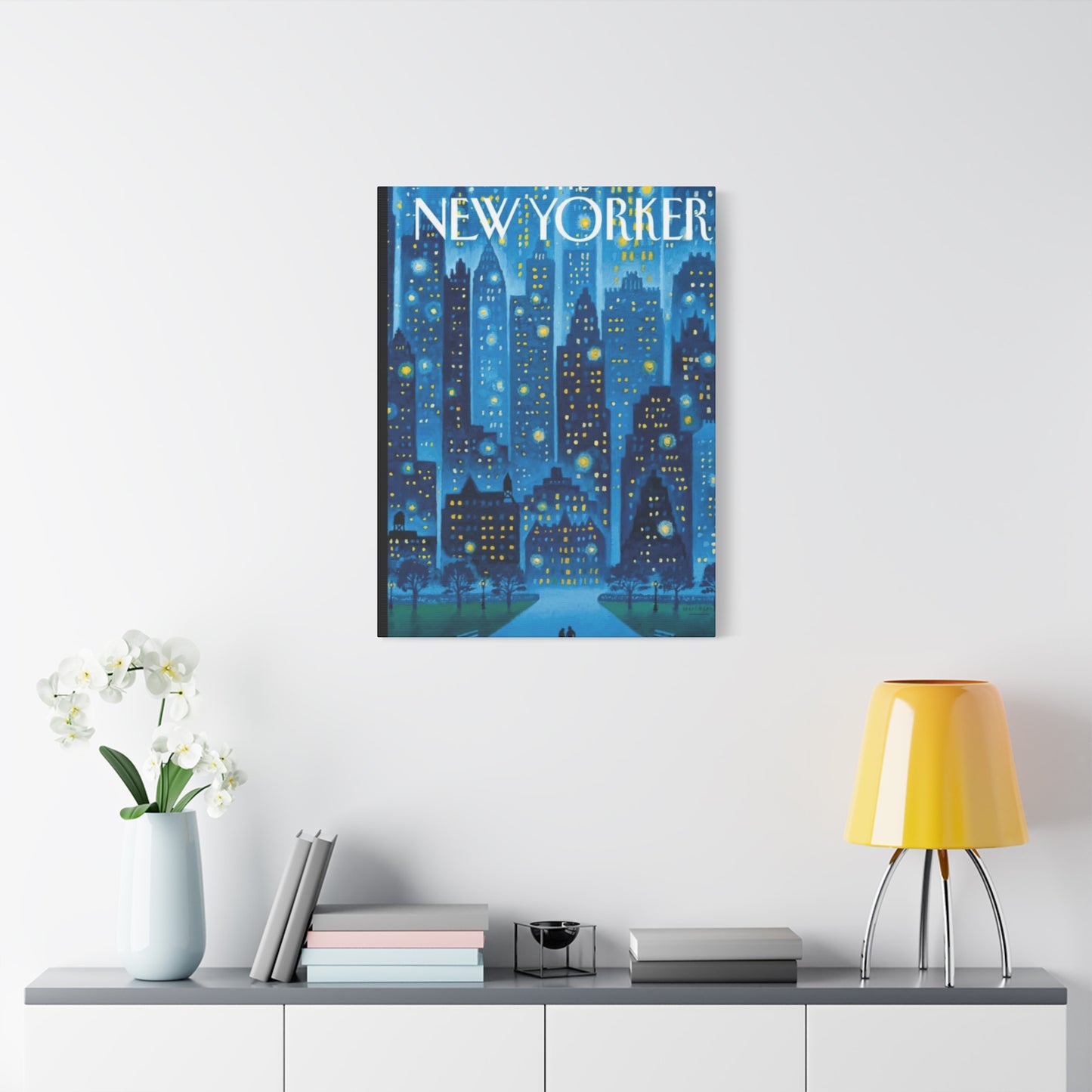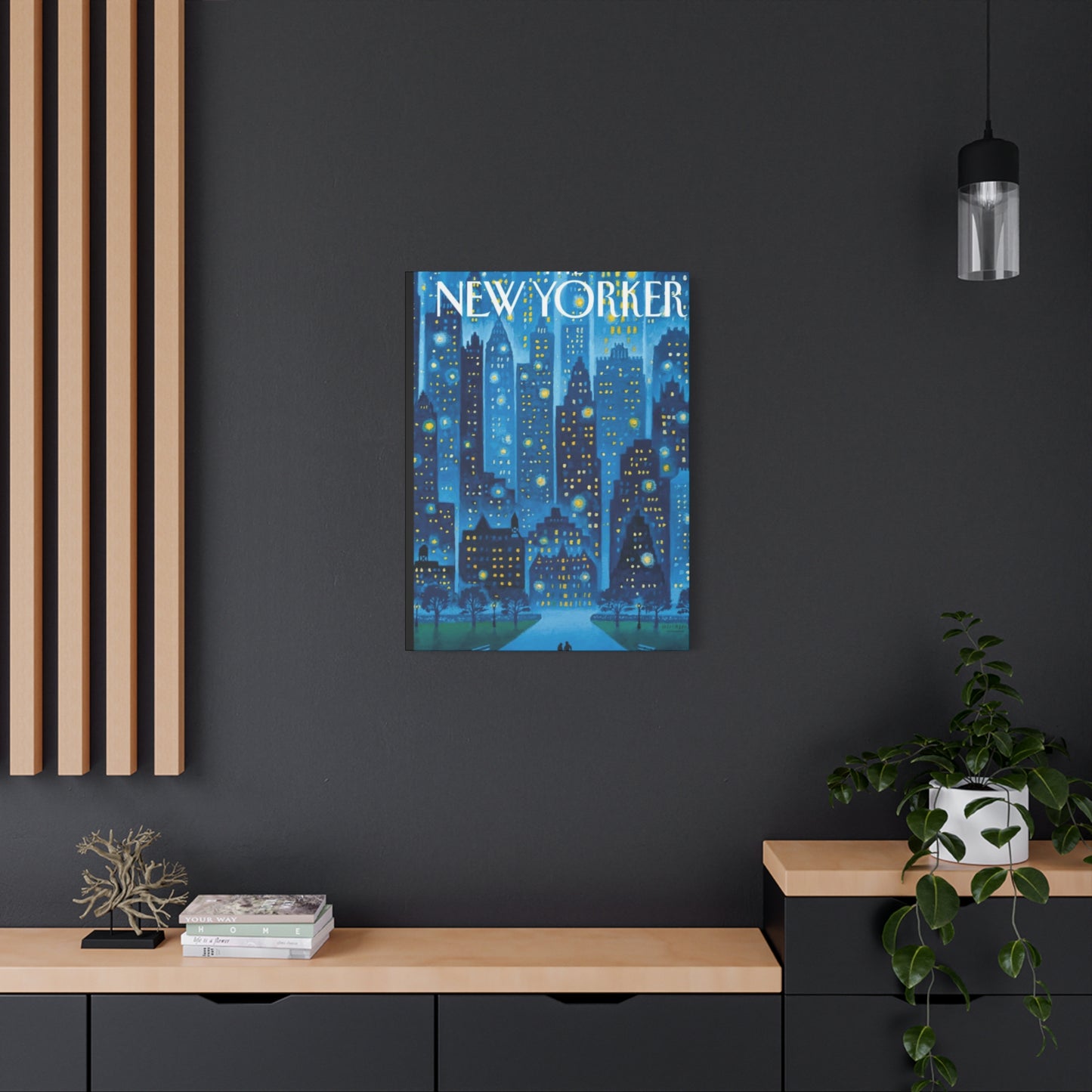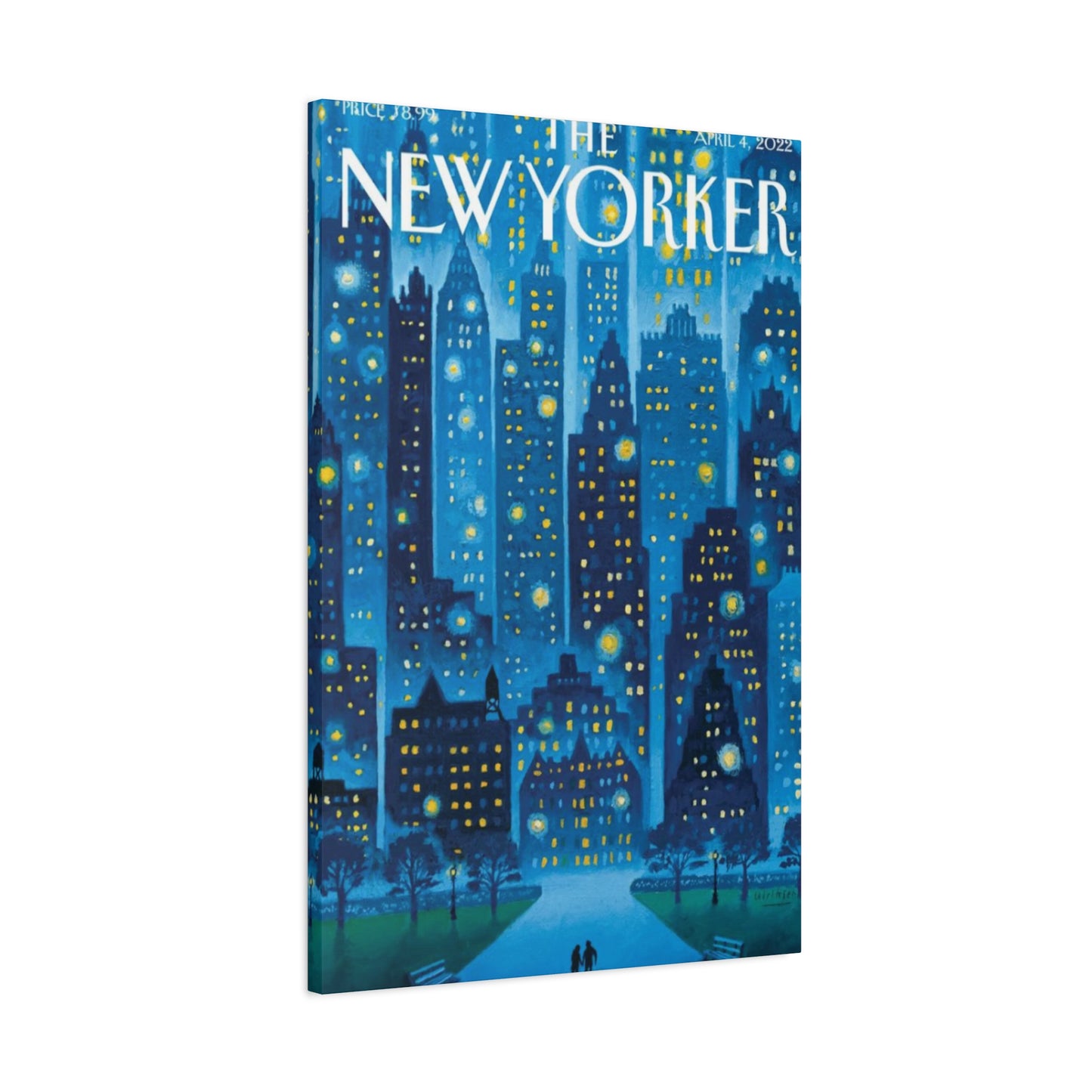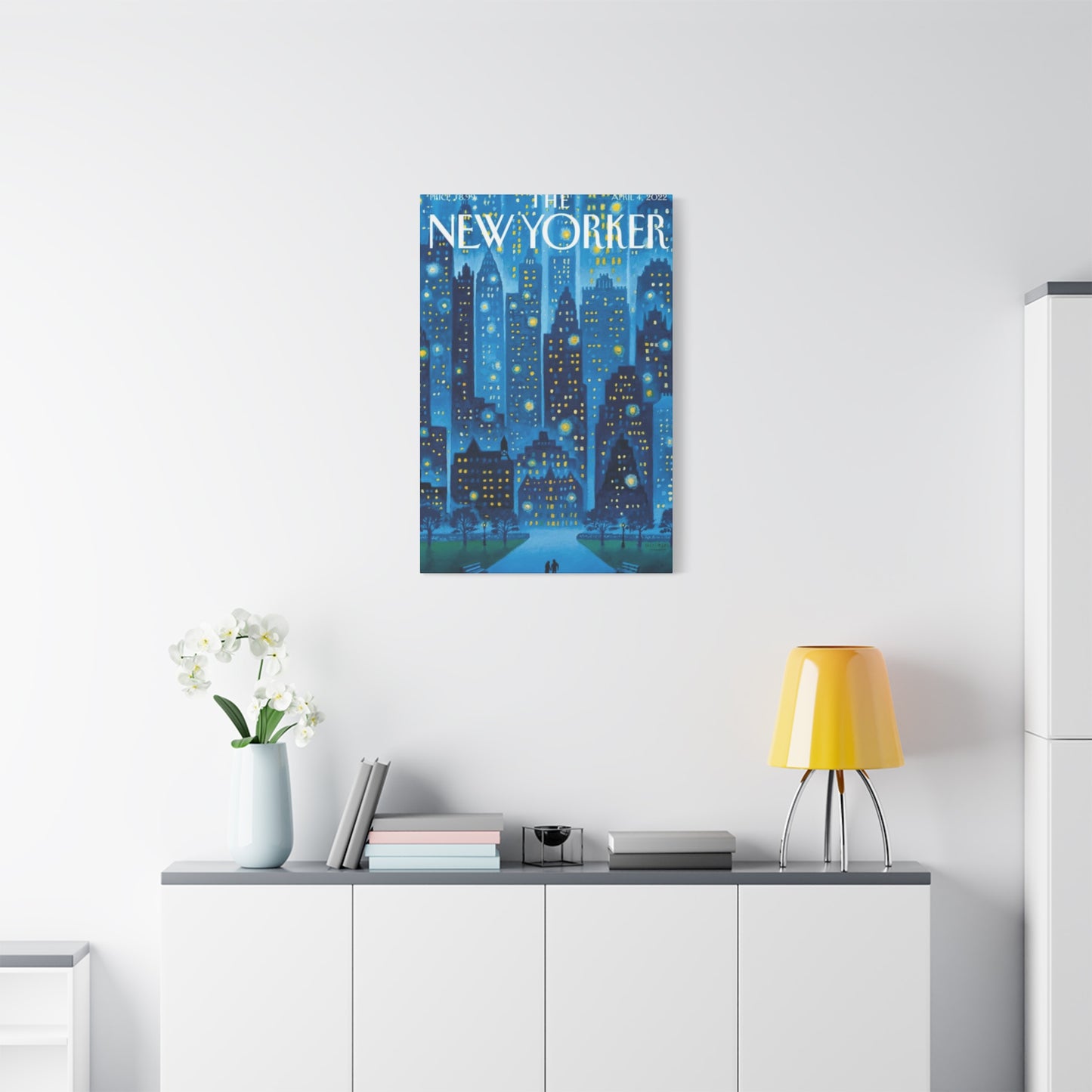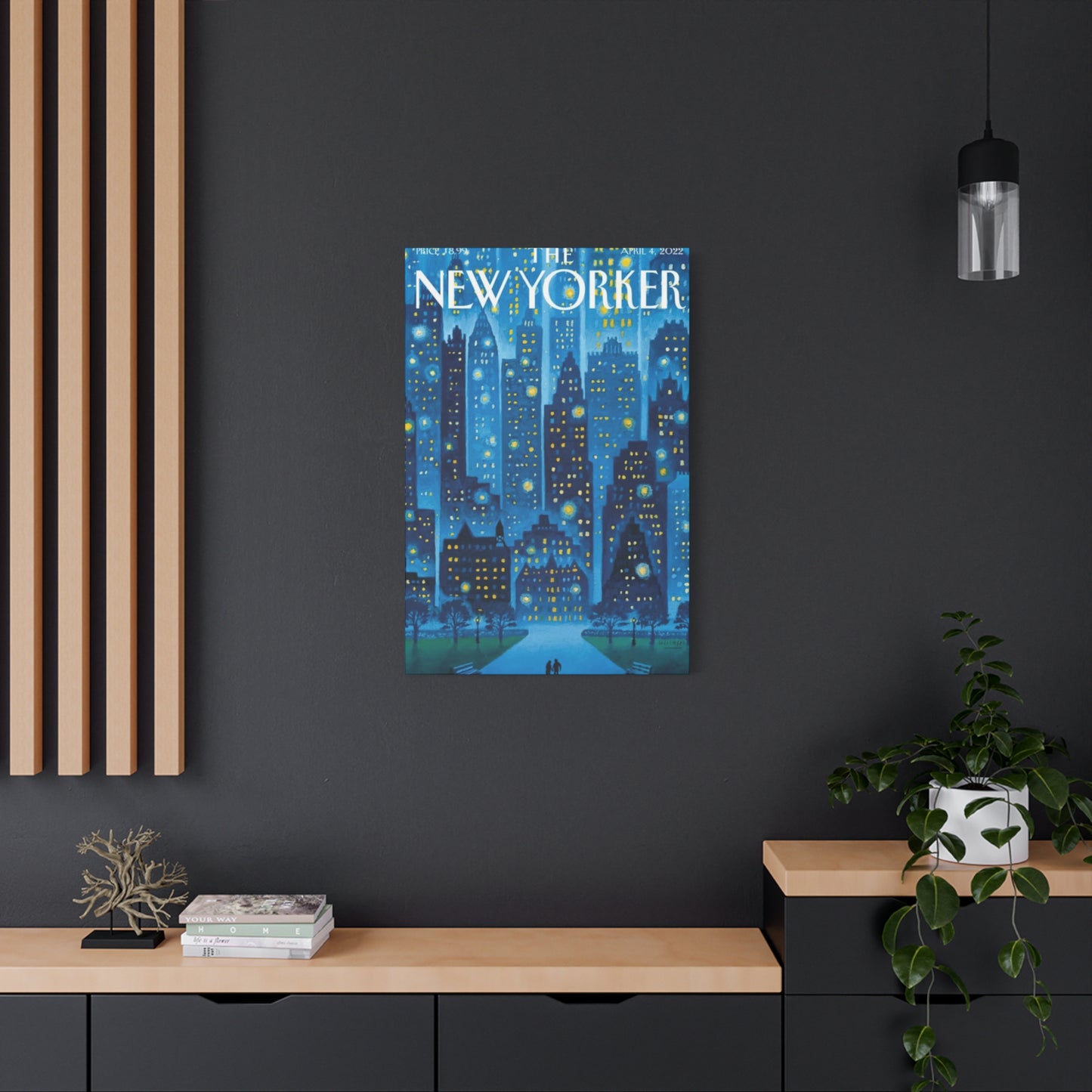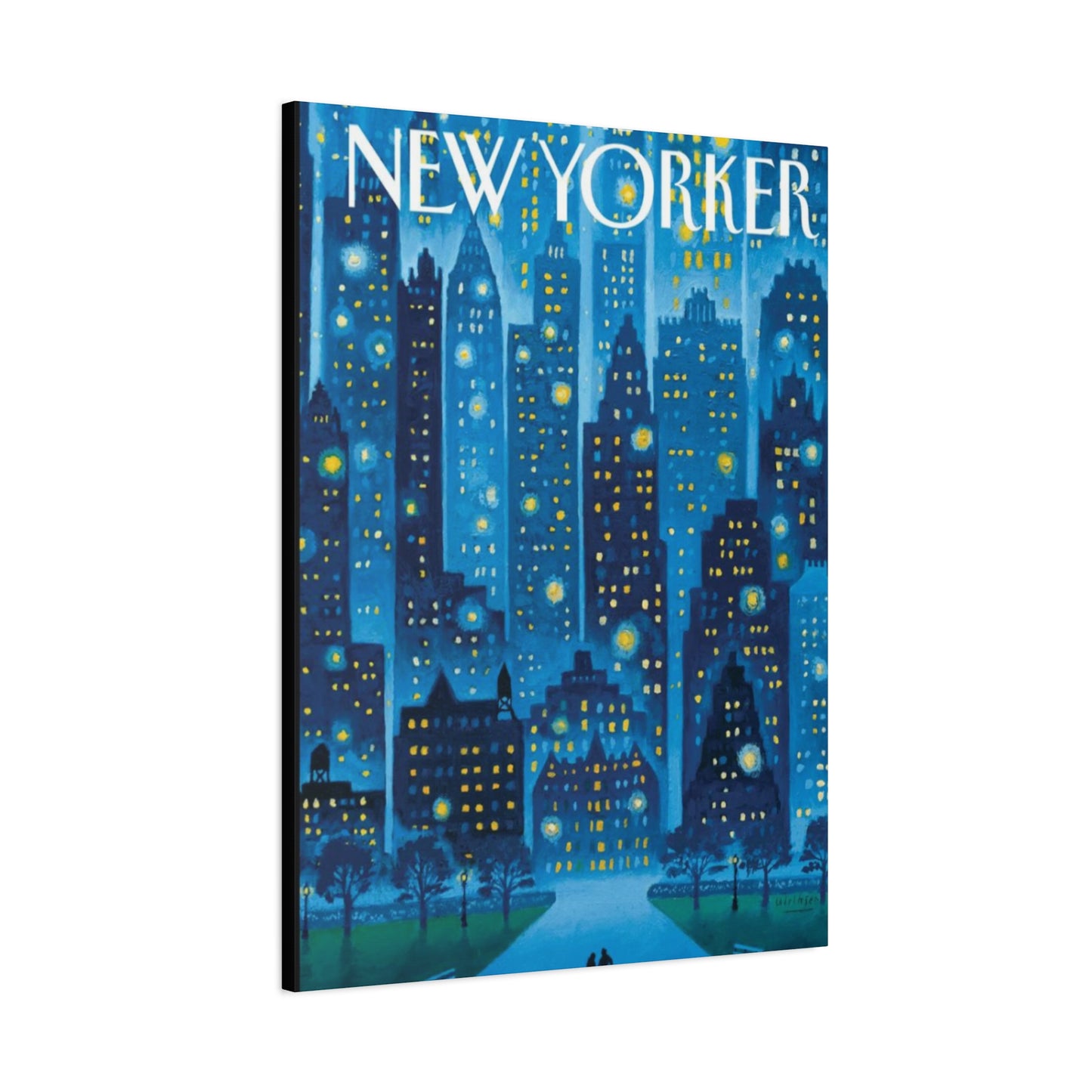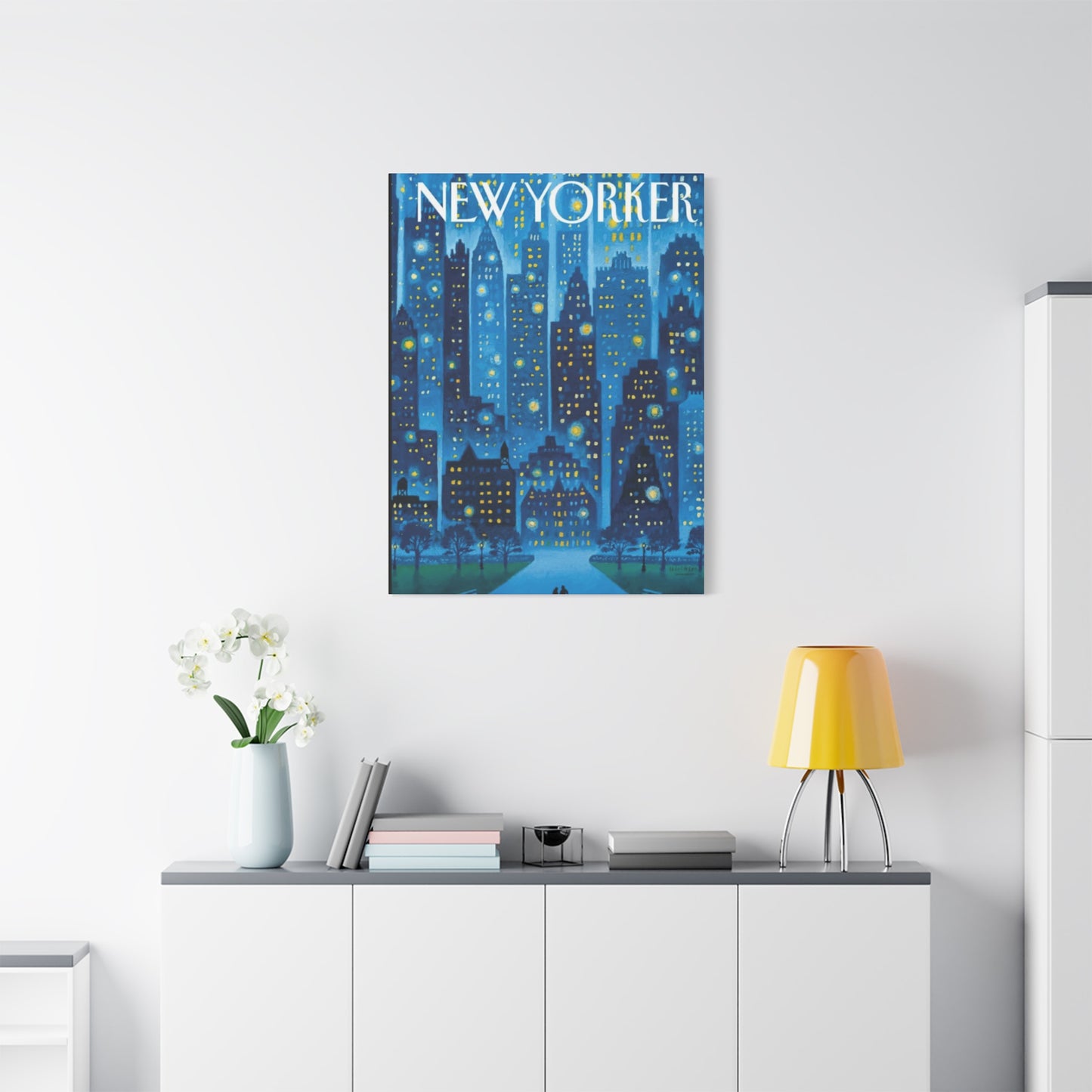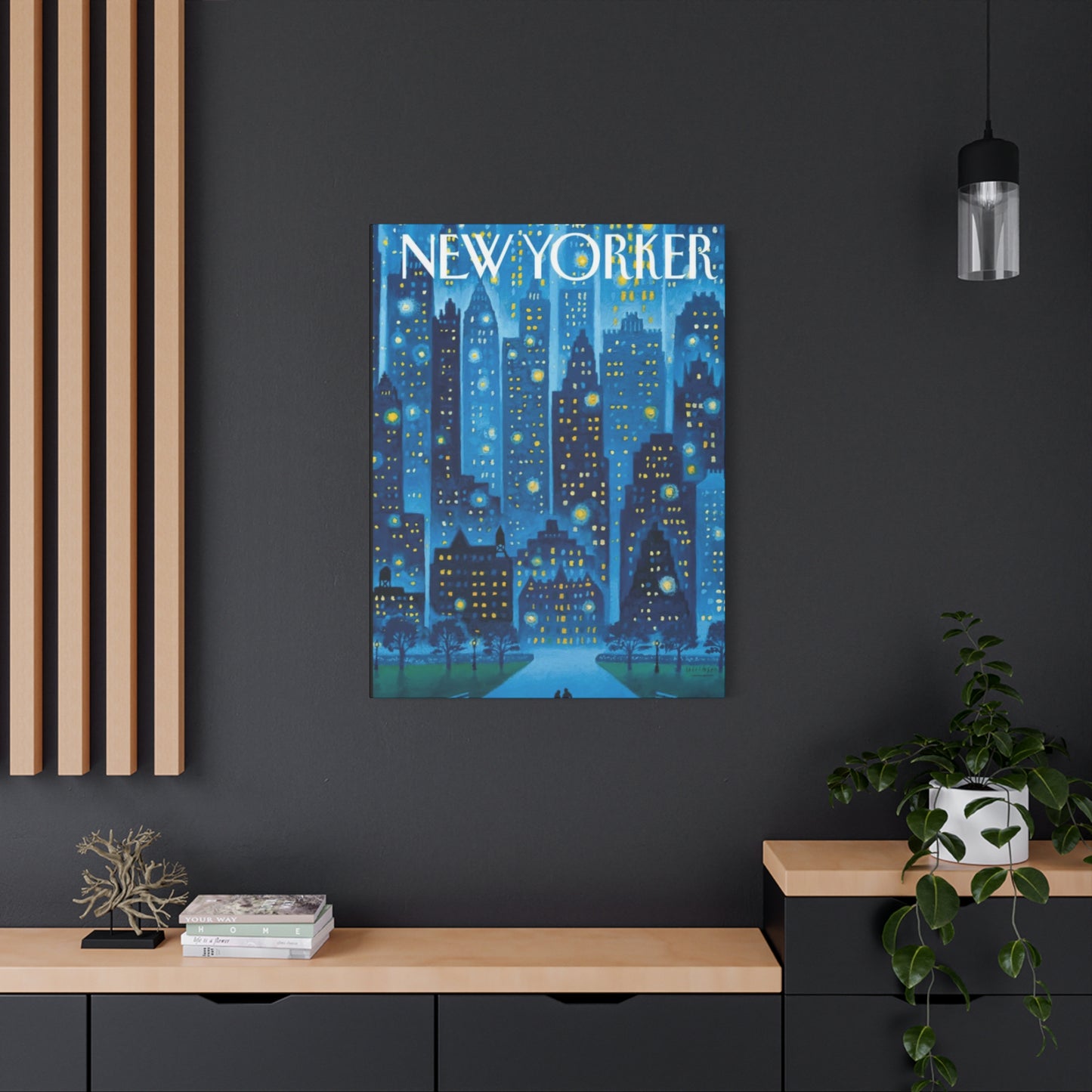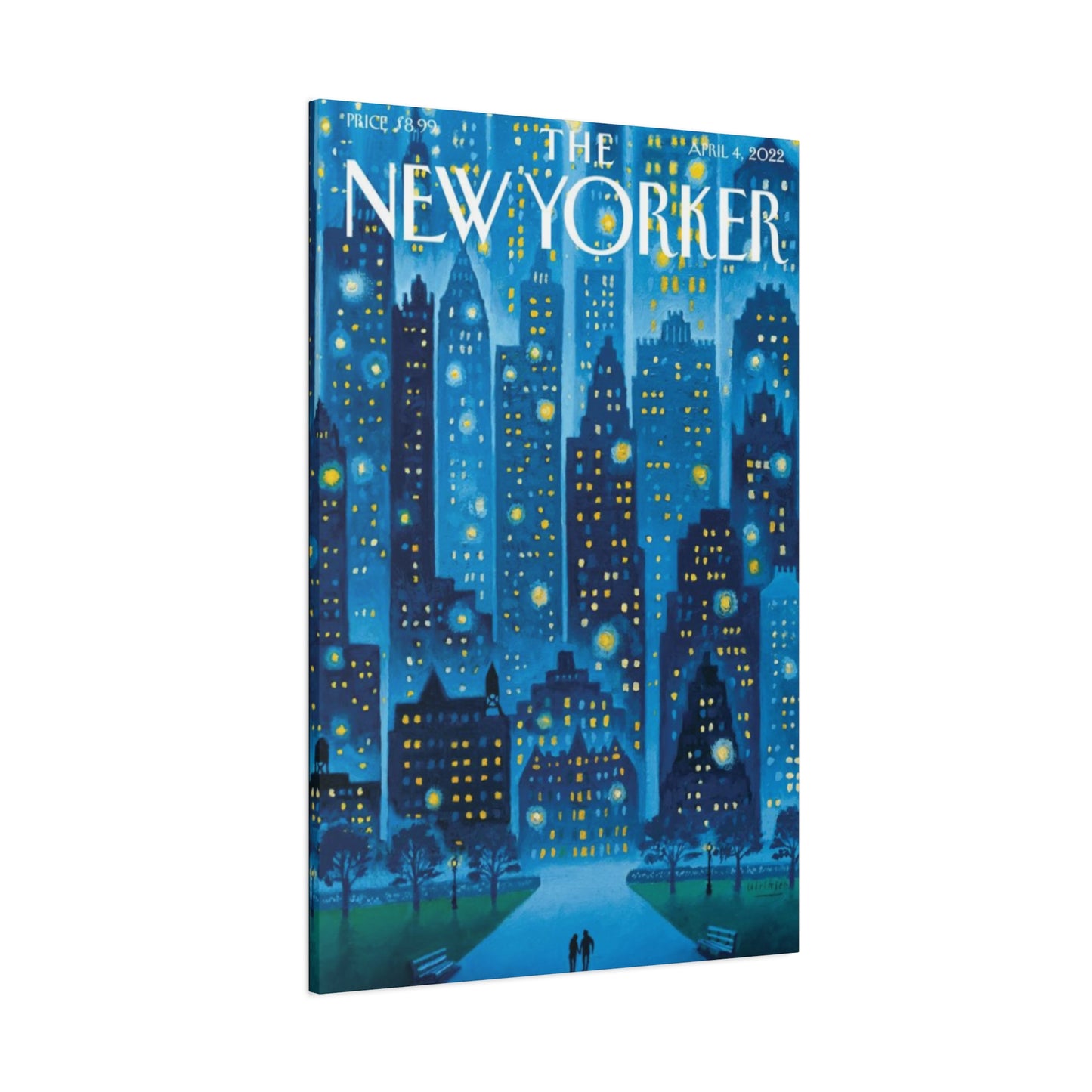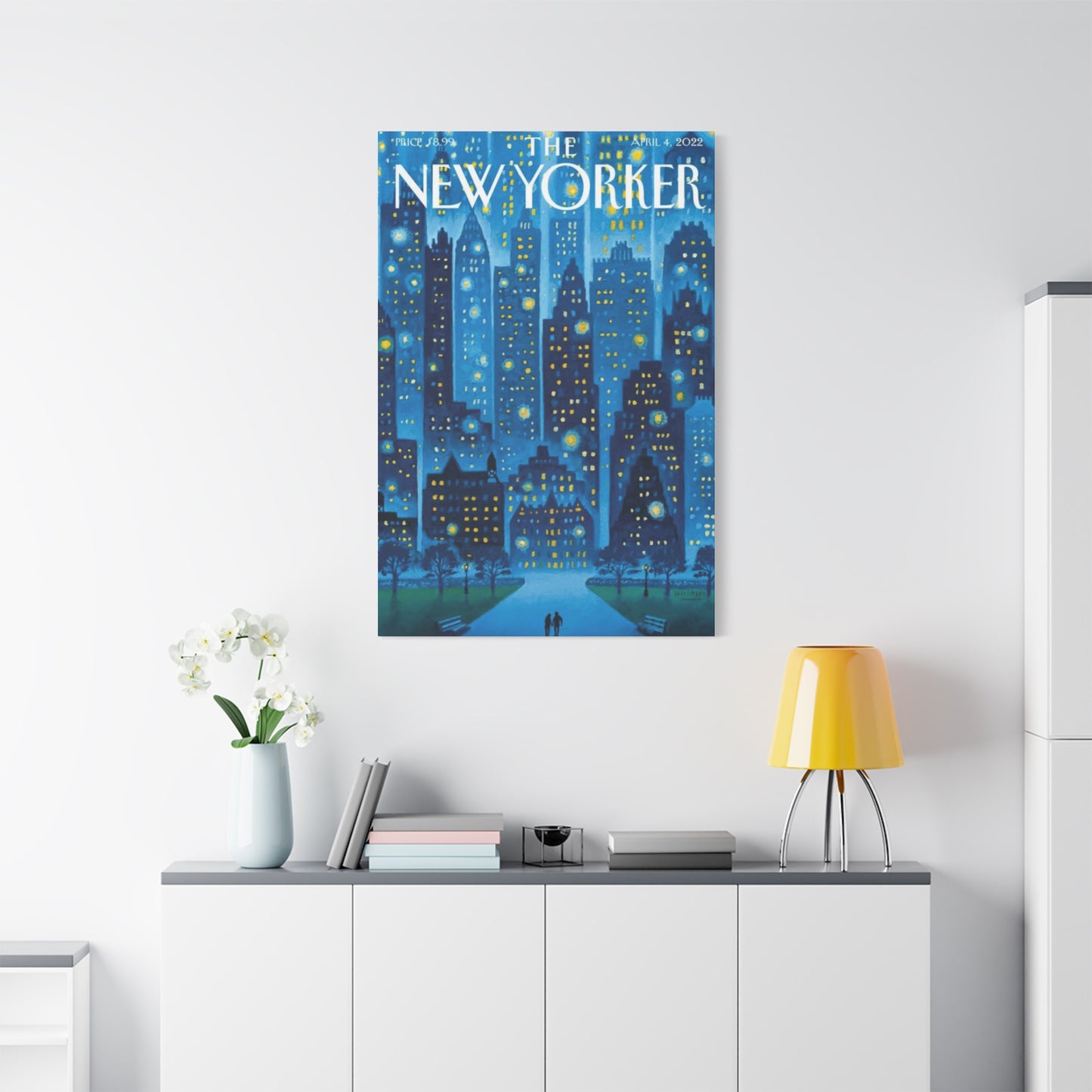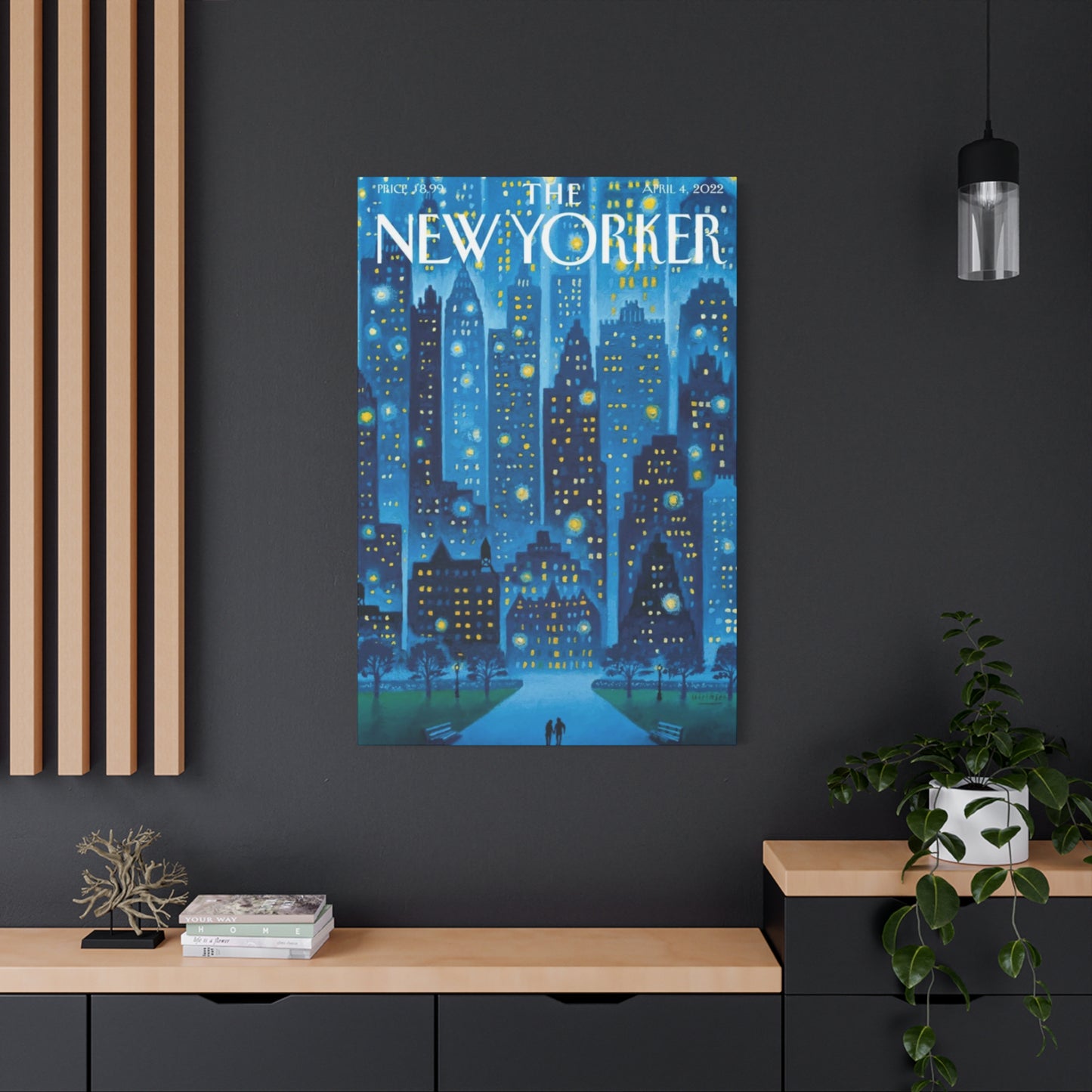Iconic New York City Wall Art Posters: Capturing Manhattan's Soul Through Classic Design
The magnetism of New York City has captivated artists, writers, and designers for generations, creating a visual language that speaks to urban sophistication and cultural richness. Among the most celebrated artistic interpretations of this metropolis are the distinctive poster designs that have emerged from decades of creative exploration, particularly those influenced by sophisticated magazine aesthetics and urban storytelling. These remarkable pieces of wall art transform living spaces into galleries that celebrate the energy, diversity, and timeless appeal of America's most iconic city.
New York City posters represent more than mere decoration; they embody a lifestyle, an attitude, and a deep appreciation for urban culture. Whether you're a longtime resident of the five boroughs, a frequent visitor who returns again and again to experience the city's magic, or someone who dreams of walking Manhattan's streets, these artistic creations offer a tangible connection to the pulse and personality of the greatest city in the world. The visual narratives captured in these posters tell stories of bustling sidewalks, towering skyscrapers, yellow taxi cabs, subway adventures, and the countless moments that define the metropolitan experience.
Bringing Manhattan's Artistic Heritage Into Your Living Space
The tradition of capturing New York City through visual art dates back more than a century, with countless artists attempting to distill the essence of urban life into images that resonate with viewers. The particular style associated with sophisticated magazine illustrations has created a distinctive aesthetic that balances wit, elegance, and urban realism. These designs often feature clean lines, bold color choices, and compositions that immediately evoke specific neighborhoods, landmarks, or quintessentially metropolitan moments.
When you introduce these artistic pieces into your home, you're not simply hanging decorative items on your walls. You're making a statement about your appreciation for cultural sophistication, your connection to urban living, and your recognition of art that transcends simple prettiness to offer commentary, humor, and insight. The best poster designs work on multiple levels, providing immediate visual appeal while rewarding closer examination with subtle details and clever observations about city life.
Interior designers have long recognized that wall art serves as the finishing touch that transforms a house into a home with personality and character. Posters celebrating New York City offer particular versatility because they complement various design aesthetics, from industrial loft spaces to traditional brownstone interiors, from minimalist modern apartments to eclectic bohemian studios. The key lies in selecting pieces that speak to your personal connection with the city while harmonizing with your existing decor.
Metropolitan Scenes That Define Urban Experience
New York City offers an inexhaustible supply of visual inspiration, from the architectural grandeur of its skyline to the intimate details of neighborhood life. Poster art capturing these scenes ranges from sweeping panoramas showing the city's famous silhouette against dawn or dusk skies to street-level perspectives that highlight the human drama unfolding on every block. Each approach offers something different to the viewer, whether it's the awe-inspiring scale of urban development or the warm familiarity of everyday moments.
The architectural diversity of Manhattan provides endless material for artistic interpretation. The art deco elegance of the Chrysler Building, the streamlined modernism of the Seagram Building, the ornate beauty of Grand Central Terminal, and the contemporary boldness of recent skyscrapers all feature prominently in poster designs. These buildings aren't just structures; they're characters in the ongoing story of the city, and seeing them represented in artistic form reminds us of their cultural significance and visual power.
Beyond architecture, the human element of city life provides equally compelling subject matter. Images of crowded sidewalks during rush hour, couples sharing moments in Central Park, vendors calling out to potential customers, musicians performing in subway stations, and countless other scenes capture the vitality that makes New York unique. These representations of daily life resonate because they show the city not as a tourist destination but as a living, breathing community where millions of stories unfold simultaneously.
The Evolution of Urban Poster Design
The history of poster art celebrating New York City reflects changing artistic movements, technological developments, and evolving attitudes toward urban life itself. Early twentieth-century posters often emphasized the city's modernity and ambition, using bold geometric forms and dramatic perspectives to convey excitement about technological progress and urban growth. These designs captured a moment when skyscrapers represented humanity's triumph over limitations, and city life symbolized opportunity and advancement.
Mid-century modern design brought different sensibilities to urban poster art, introducing simplified forms, sophisticated color palettes, and a cooler, more ironic approach to representing city life. Artists during this period often played with the contrast between idealized urban living and the realities of crowded, sometimes challenging metropolitan existence. This tension produced work that was simultaneously celebratory and subtly critical, acknowledging both the attractions and difficulties of city life.
Contemporary poster design draws from all these historical periods while adding new perspectives shaped by digital technology, global influences, and changing attitudes toward urbanism. Modern artists can reference vintage aesthetics while using current tools and techniques, creating work that feels both nostalgic and fresh. This blending of old and new mirrors New York City itself, where historic buildings stand alongside contemporary architecture, and traditions coexist with constant innovation.
Sophisticated Magazine Aesthetics in Wall Art
A particular strand of poster design draws inspiration from decades of sophisticated magazine illustration, creating a distinctive visual style that has become synonymous with urban cultural commentary. This approach typically features elegant draftsmanship, clever conceptual thinking, and a perspective that is simultaneously affectionate and gently satirical. The illustrations often capture specific moments or scenarios that encapsulate larger truths about metropolitan existence.
What makes this style so appealing for home decoration is its ability to be simultaneously sophisticated and accessible. The images often contain layers of meaning that reveal themselves over time, rewarding repeated viewing with new details and connections. A poster might appear to show a simple street scene at first glance, but closer examination reveals subtle humor in the details, commentary on social dynamics, or references to cultural phenomena that add depth to the initial impression.
The color palettes associated with this aesthetic tend toward either muted, sophisticated tones or bold, contrasting combinations that create immediate visual impact. Both approaches work well in home environments, with the former providing subtle elegance that complements various design schemes, while the latter creates focal points that anchor and energize a space. The choice between these approaches depends on your personal taste and the role you want the artwork to play in your overall interior design.
Cultural Commentary Through Visual Storytelling
One of the most compelling aspects of quality poster art is its ability to offer cultural commentary while remaining visually appealing. The best designs function as both decoration and provocation, making observations about contemporary life that range from gentle humor to sharp social criticism. This dual function gives the artwork staying power; it doesn't become boring or feel dated because there's always something new to consider in the relationship between the image and your own experiences.
New York City serves as an ideal subject for this kind of cultural commentary because it concentrates so many aspects of contemporary life into a relatively small geographic area. Issues of class, race, immigration, commerce, art, politics, and countless other themes play out daily on the city's streets, providing rich material for visual artists. A poster might depict a subway car containing representatives of the city's incredible diversity, making subtle observations about how these different worlds coexist and interact in shared urban space.
The humor often present in this work serves multiple functions. On one level, it makes the art more enjoyable and accessible, providing immediate pleasure through wit and cleverness. On another level, humor can be a vehicle for more serious observations, allowing artists to address potentially uncomfortable topics in ways that invite consideration rather than defensiveness. This balance between entertainment and insight characterizes the most successful poster designs.
Nostalgia and Timelessness in Urban Imagery
Many people are drawn to New York City posters because they evoke nostalgia for particular periods in the metropolis's history. Vintage-style designs might reference the mid-century era when a certain kind of sophisticated urban culture flourished, or they might recall earlier periods of immigration and growth that shaped the city's character. This nostalgic appeal doesn't diminish the artwork's relevance; instead, it adds layers of meaning by connecting present-day viewers with historical continuity.
Interestingly, even newly created posters often incorporate vintage aesthetic elements, suggesting that certain visual approaches to representing the city have achieved timeless status. The use of retro color schemes, classic typography, and composition styles borrowed from earlier eras creates work that feels both contemporary and connected to tradition. This temporal ambiguity appeals to viewers who appreciate both modern design sensibilities and the richness of historical visual culture.
The concept of timelessness in poster design relates to the artist's ability to capture essential rather than superficial characteristics of their subject. While specific details like fashion, vehicles, or storefronts might date an image to a particular era, the underlying truths about urban experience remain constant. The feeling of being simultaneously alone and surrounded by millions, the energy of streets full of purpose and activity, the contrast between public and private space—these fundamental aspects of city life transcend specific time periods and make well-designed posters perpetually relevant.
Typography and Text in Urban Poster Design
The relationship between image and text in poster design deserves special attention because typography contributes significantly to overall aesthetic impact. In many cases, the letterforms themselves become visual elements that work with or against the imagery to create meaning. Bold sans-serif fonts might convey modernity and directness, while elegant serifs suggest tradition and refinement. The choice of typeface, size, placement, and color all affect how viewers perceive and interpret the poster.
Some designs feature minimal text, allowing the visual elements to dominate and letting viewers supply their own interpretations. Others incorporate substantial written content, whether it's dialogue between depicted figures, labels identifying locations or situations, or commentary that frames how we should understand the image. The balance between these approaches varies depending on the artist's intent and the specific message or mood they want to convey.
Typography also connects poster design to the broader history of graphic design and commercial art. Many techniques now used in fine art posters originated in advertising, where the need to communicate clearly and memorably led to innovations in how text and image could be combined. This commercial heritage doesn't diminish the artistic value of contemporary posters; rather, it demonstrates how aesthetic innovation often occurs when functional demands meet creative vision.
Color Theory and Metropolitan Mood
The colors chosen for New York City posters significantly influence their emotional impact and decorative versatility. Different color schemes evoke distinct moods and associations, from the energetic vibrancy of primary colors to the sophisticated restraint of monochromatic palettes. Understanding these color relationships helps in selecting posters that will achieve your desired effect within your living space.
Warm color schemes dominated by reds, oranges, and yellows tend to create feelings of energy, excitement, and warmth. These palettes work well for posters depicting active city scenes, sunset skylines, or moments of human connection. The warmth draws viewers in and creates an inviting atmosphere that can make a space feel more social and dynamic. Such posters often become conversation pieces because their bold colors naturally attract attention and encourage engagement.
Cooler palettes featuring blues, greens, and purples convey different qualities—calm, sophistication, depth, or mystery. Posters using these colors might depict nighttime city scenes, rainy days, or moments of urban solitude. They tend to create more contemplative moods and can help balance spaces that might otherwise feel too active or busy. The coolness provides visual relief and can make a room feel larger and more serene.
Monochromatic or limited color schemes offer their own appeal, using variations of a single hue or a very restricted palette to create unity and focus. These approaches often feel more sophisticated and can be easier to integrate into existing decor schemes because they present fewer potential color conflicts. Black and white posters, in particular, have timeless elegance and work in virtually any setting, from ultramodern to traditionally decorated spaces.
Composition Techniques in Urban Visual Narratives
The way elements are arranged within a poster's frame dramatically affects its visual impact and narrative power. Composition involves decisions about perspective, focal points, balance, movement, and countless other factors that determine how our eyes travel across the image and what meanings we derive from the relationships between elements. Skilled artists manipulate these compositional tools to guide viewer attention and create specific effects.
Vertical compositions often emphasize the height of urban architecture, using upward-oriented perspectives to convey the scale and ambition of the built environment. These designs might show skyscrapers receding toward the sky, creating feelings of awe or aspiration. The vertical format also naturally suits many wall spaces, making such posters practical choices for narrow wall sections or areas between windows or doorways.
Horizontal compositions, by contrast, tend to emphasize breadth and panorama, showing expansive views of skylines, street scenes, or park landscapes. These formats create different spatial relationships and can make walls appear wider while providing sweeping perspectives that invite the eye to explore from side to side. Horizontal posters work particularly well above furniture pieces like sofas or beds, where they can help define and balance these functional areas.
Some of the most dynamic compositions use diagonal lines and angular perspectives to create energy and movement within the frame. These designs might show streets receding into the distance, figures moving purposefully across the scene, or architectural elements intersecting at dramatic angles. The tension created by diagonal compositions keeps the eye active and engaged, preventing the image from feeling static or passive.
Seasonal Variations in Urban Poster Imagery
New York City transforms dramatically with the changing seasons, and poster art often captures these cyclical variations in urban atmosphere and appearance. Winter scenes might show the city blanketed in snow, with figures bundled against the cold, holiday decorations brightening dark streets, and the particular quality of winter light creating sharp contrasts between illuminated windows and shadowed buildings. These images evoke cozy warmth despite their cold subject matter, reminding viewers of the pleasure of returning to heated interiors after braving winter weather.
Spring brings different visual possibilities, with trees in Central Park beginning to bloom, outdoor cafes reopening, and people emerging from winter hibernation to reclaim public spaces. Posters depicting spring in the city often feature lighter color palettes, more open compositions, and a sense of renewal and possibility. The season's association with new beginnings makes these images particularly appealing for people making fresh starts or seeking to refresh their living spaces.
Summer imagery might emphasize the particular energy of the city during hot months, when fire hydrants become impromptu fountains, rooftop gatherings proliferate, and the sidewalk life that defines urban culture reaches peak intensity. The bright light of summer allows for saturated colors and strong shadows, creating graphic boldness that translates well to poster format. These images capture the vitality and slight chaos of warm-weather urban living.
Autumn posters often feature warm color palettes reflecting fall foliage, scenes of cultural activities as the season's busy schedule begins, and the particular beauty of the city preparing for winter. The season's transitional nature provides metaphorical richness, and its association with new academic and cultural seasons gives autumn imagery a sense of purpose and possibility that resonates with many viewers.
Neighborhood Character in Poster Design
Different New York City neighborhoods possess distinct identities, architectural styles, and cultural associations that poster artists can emphasize to create work with specific geographical and cultural resonance. SoHo's cast-iron architecture and artistic heritage, Greenwich Village's bohemian history and intimate scale, the Upper East Side's elegance and museum culture, Harlem's African American cultural legacy, Chinatown's vibrant street life—each area offers unique visual and conceptual material for artistic interpretation.
Posters focusing on specific neighborhoods appeal to residents who feel particular attachment to their home area, visitors who fell in love with certain parts of the city, or anyone who appreciates the diversity that gives New York its character. These geographically specific designs often include recognizable landmarks, typical architectural features, or cultural elements that immediately identify the location to those familiar with it while introducing others to areas they might not know.
The neighborhood approach also allows for more intimate, human-scaled perspectives than citywide views. Instead of showing the entire skyline, a neighborhood poster might depict a beloved corner deli, a tree-lined residential street, a local park where neighbors gather, or a particular intersection where multiple cultures intersect. These focused views capture the everyday reality of urban living rather than tourist-focused imagery, creating deeper emotional connections with viewers who recognize their own experiences reflected in the art.
The Role of Light and Shadow in Urban Imagery
Light plays a crucial role in how we experience cities, and skilled poster designers use illumination and shadow to create mood, depth, and drama. The quality of light at different times of day profoundly affects urban atmosphere—the harsh clarity of midday, the golden warmth of late afternoon, the dramatic shadows of early morning or evening, the artificial glow of nighttime streetlights and neon signs. Each lighting condition offers different expressive possibilities.
Dramatic shadow work can transform ordinary scenes into striking compositions, using contrast between light and dark to create visual punch and mysterious atmosphere. Posters employing strong shadows often have a noir quality, evoking the city's grittier, more mysterious aspects. These designs appeal to viewers who appreciate urban complexity and aren't interested in prettified or overly romantic depictions of city life.
Conversely, soft, diffused light creates gentler, more approachable imagery that emphasizes the city's more humane and livable qualities. Overcast days, fog, or the particular quality of light filtering through urban canyons can produce subtle, atmospheric effects that feel contemplative rather than dramatic. Posters using this approach often have a quieter emotional register, appealing to those who seek calm and reflection in their wall art.
Nighttime urban imagery opens up entirely different possibilities, as artificial light sources create pools of illumination against dark backgrounds. The glow of windows in apartment buildings, neon signs advertising various establishments, streetlights creating halos in rain or fog, headlights and taillights from moving vehicles—all these light sources become compositional elements that can be arranged to create various effects. Night scenes often feel romantic, mysterious, or dramatic, offering emotional qualities distinct from daytime imagery.
Human Figures and Urban Scale
The relationship between human figures and urban environment provides rich material for poster design, as this interaction reveals much about how we experience and navigate city spaces. Artists must make decisions about figure scale, number, individuality, and positioning that affect how viewers understand the image's meaning. Large, detailed figures that dominate the composition create intimacy and focus on individual human experience, while small figures dwarfed by architecture emphasize the city's overwhelming scale.
Some posters feature crowds, depicting the masses of people who give the city its energy while raising questions about individuality within collective urban existence. These designs might show subway platforms packed with commuters, sidewalks thronged with pedestrians, or public spaces filled with people pursuing various activities. The challenge for artists working with crowds is maintaining visual interest while suggesting the diversity and multiplicity of urban populations.
Other designs focus on solitary figures or small groups, using relative isolation to explore themes of loneliness, independence, or the private moments that occur within public space. A single person waiting on a subway platform, a couple sharing a moment on a park bench, an individual gazing at the city from a window—these scenarios create different emotional resonances than crowd scenes, often feeling more introspective or melancholic.
The positioning of figures within the urban landscape also communicates meaning. Figures shown from behind, gazing at the city, position viewers to share that perspective and contemplate the urban scene along with the depicted person. Figures shown from the front, looking outward from the image toward the viewer, create a different dynamic, perhaps inviting connection or presenting a particular attitude or emotional state for consideration. These subtle compositional choices significantly affect how we experience and interpret the artwork.
Architectural Detail and Urban Character
While sweeping skyline views capture the city's overall drama, close attention to architectural detail reveals character and history in ways that broader perspectives cannot. Poster designs that focus on specific building features—ornate cornices, art deco metalwork, brownstone stoops, fire escapes zigzagging down building facades, water towers perched on rooftops—celebrate the accumulated details that give the city its particular texture and personality.
These detail-oriented designs often appeal to architecture enthusiasts, longtime residents who have developed appreciation for urban fabric through daily observation, and anyone who values craftsmanship and historical preservation. They reward careful viewing because the artist's attention to accurate representation of architectural features creates opportunities for viewers to notice elements they might otherwise overlook. This attention to detail creates a reciprocal relationship between art and reality, where the poster enhances viewers' ability to see and appreciate the actual city.
The contrast between different architectural eras provides another avenue for visual interest. Poster designs might juxtapose ornate nineteenth-century buildings with sleek modern towers, showing how the city accommodates multiple temporal layers simultaneously. This architectural diversity reflects the broader cultural diversity that characterizes New York, suggesting that the city's strength lies partly in its ability to contain multitudes without forcing uniformity.
Even seemingly mundane architectural elements can become subjects for artistic celebration when viewed with attention and creativity. Fire hydrants, subway grates, brick patterns, window arrangements, street signs, lampposts—all these everyday features contribute to the urban landscape's visual vocabulary. Posters that elevate these humble elements to artistic subjects remind us to maintain observant engagement with our surroundings rather than moving through the city with unseeing familiarity.
Transportation Systems in Urban Visual Culture
New York's famous transportation systems—particularly the subway, but also taxis, buses, ferries, and pedestrian traffic—feature prominently in poster art because they represent essential aspects of city life and provide rich visual material. The subway system especially holds iconic status, serving as the great equalizer where all classes and backgrounds share space, and functioning as a stage where countless urban dramas unfold daily.
Subway imagery appears in various forms across different poster designs. Some focus on the system's infrastructure—tiled walls, platform signs, train cars entering or leaving stations—emphasizing the distinctive aesthetic that makes the New York subway immediately recognizable. Others depict the human element—waiting passengers, crowded cars, musicians performing, people absorbed in books or phones—capturing the social dimension that makes subway travel both challenging and fascinating.
Yellow taxi cabs have achieved such iconic status that they appear in countless poster designs, sometimes as central subjects and other times as supporting elements that help establish New York identity. Their bright color provides a welcome visual pop in many compositions, and their association with both tourist experiences and daily commuter life gives them symbolic flexibility. A poster might show a line of taxis in traffic, a single cab splashing through a rainy street, or the checkered pattern and taxi light that immediately signal New York to viewers worldwide.
Pedestrian traffic provides another form of urban transportation that poster artists frequently explore. The experience of walking in New York—navigating crowded sidewalks, dodging puddles and street vendors, observing the constant flow of humanity—distinguishes city living from suburban or rural existence. Posters depicting people walking often capture the purposefulness and energy that characterize the pedestrian experience, showing the city as a place designed for human movement at walking scale.
Weather and Atmospheric Conditions in Urban Art
Weather dramatically affects urban atmosphere and appearance, and poster designers use various weather conditions to create specific moods and visual effects. Rain transforms the city, creating reflections in puddles and wet pavement, adding drama through stormy skies, and altering how people move through space as they dodge precipitation and seek shelter. Rain scenes often feel romantic or moody, with the water adding visual interest through its effects on light and surface.
Snow creates entirely different atmospheres, temporarily softening the city's hard edges and muffling its constant noise. Poster designs depicting snow might emphasize the beauty of the transformed landscape, the quiet that settles over normally frenetic streets, or the challenges of navigating sidewalks and roads under winter conditions. Snow also provides opportunities for depicting specific New York experiences—the difficulty of getting a taxi in a snowstorm, children playing in park snow, the particular beauty of the city's parks under white cover.
Fog and mist create mysterious, atmospheric effects that poster artists can use to suggest the city's more enigmatic qualities. Buildings partially obscured by fog become ghostly presences, and familiar scenes take on unfamiliar aspects when visibility decreases. These weather conditions work particularly well for night scenes, where fog catches and diffuses artificial light to create halos and glows that add romance and mystery.
Clear, bright weather allows for crisp, sharp imagery that emphasizes architectural detail and the city's visual complexity. These conditions work well for posters meant to convey energy, optimism, or the overwhelming sensory experience of urban life. The harsh clarity of strong sun creates deep shadows and bright highlights that can be used to create dramatic contrast and bold graphic effects.
Cultural Institutions and Urban Identity
New York's world-renowned cultural institutions—museums, theaters, concert halls, libraries—define much of the city's identity and appear frequently in poster art celebrating urban culture. These buildings represent not just physical structures but also the accumulated artistic and intellectual achievements that make the city a global cultural capital. Posters depicting these institutions might show their impressive architecture, suggest the activities that occur within them, or use them as symbols of the values and aspirations associated with urban cultural life.
Museum imagery might feature the distinctive architecture of major institutions, from classical buildings with grand staircases and columned facades to contemporary structures with bold, innovative designs. The association of these places with art, history, and learning gives them symbolic weight beyond their visual appearance, making them effective subjects for posters meant to convey sophistication and cultural engagement.
Theater districts provide visual richness through their concentration of marquees, neon signs, crowds of audience members, and the general energy of performance culture. Posters depicting these areas might emphasize the excitement of opening nights, the glamour of theatrical tradition, or the democratic accessibility of cultural experiences that draw audiences from all backgrounds. The bright lights and energetic crowds make these scenes visually exciting while connecting to important aspects of urban cultural life.
Libraries, both major research institutions and neighborhood branches, represent the city's commitment to learning and the democratic ideal of free access to knowledge. Poster designs featuring library architecture might emphasize their grandeur and the importance society places on literacy and education, while also suggesting the quiet contemplation that contrasts with the frenetic energy of surrounding streets.
Parks and Green Spaces in Urban Composition
Central Park and other green spaces provide essential counterpoints to the city's built environment, and poster artists use these areas to explore the relationship between nature and urbanity. Park imagery might emphasize the dramatic contrast between surrounding buildings and interior green space, show the recreational activities that parks enable, or focus on the particular beauty of trees, lawns, and water features within an urban context.
Central Park appears in countless poster designs because it serves as the city's collective backyard, a shared space where all types of people gather for recreation, relaxation, and connection with nature. Artists might depict famous landmarks within the park—Bow Bridge, Bethesda Fountain, the Sheep Meadow—or focus on more general scenes of people enjoying green space. The park's seasonal transformations provide opportunities for capturing different moods and atmospheres throughout the year.
Smaller neighborhood parks and pocket gardens offer more intimate settings that reveal how urban planning incorporates nature at local scales. Posters showing these spaces often feel more personal and residential, depicting where actual daily life occurs rather than tourist experiences. The appreciation for small green spaces reflects understanding of how crucial these breathing spaces are to making dense urban living sustainable and pleasant.
Waterfront areas—along the Hudson and East Rivers, in harbor locations, around the city's various piers—provide yet another type of open space that poster artists explore. These liminal zones where city meets water offer expansive views, light-reflecting surfaces, and the particular atmosphere of maritime locations. Waterfront imagery often feels more open and optimistic than interior city scenes, suggesting possibility and escape while remaining distinctly urban.
Food Culture and Street Life in Poster Art
New York's legendary food culture—from fine dining establishments to street vendors selling hot dogs and pretzels—provides colorful, energetic subject matter for poster designs. Food-related imagery might show restaurant facades with their distinctive signage, street vendors with their carts, markets displaying produce and goods, or people eating in various settings from sidewalk cafes to park benches. These scenes capture essential aspects of urban life while offering opportunities for bright colors and dynamic compositions.
Street vendors, particularly food carts and pushcarts, have iconic status in New York imagery because they represent immigrant entrepreneurship, accessible cuisine, and the sidewalk culture that characterizes city life. Poster designs featuring vendors might emphasize the colorful umbrellas and signs that mark their locations, show interactions between vendors and customers, or capture the busy corner locations where multiple carts gather to serve lunch crowds.
Restaurant and cafe culture provides another dimension of urban food life, from classic diners to trendy eateries to neighborhood institutions that have served communities for generations. Posters depicting these establishments often emphasize their distinctive signage, window views showing interior life, or outdoor seating areas where dining and people-watching intersect. The variety of culinary traditions represented in the city's restaurants reflects broader cultural diversity and makes food-related posters celebration of immigrant contributions and cultural exchange.
Markets—whether permanent structures or temporary farmers markets and street fairs—offer visual abundance through their displays of produce, flowers, goods, and the crowds they attract. The colors and textures of displayed items, the energy of vendors calling to customers, and the democratic accessibility of market shopping create scenes that feel vibrant and essential. Posters capturing market life celebrate the basic human activities of acquiring food and gathering in public space.
Nightlife and Evening Energy in Urban Scenes
The city's famous nightlife and the distinctive energy of urban evenings provide subject matter that allows poster artists to explore themes of entertainment, romance, mystery, and the transformation that occurs when daylight fades. Nighttime imagery often uses dramatic lighting, simplified forms emerging from darkness, and the glow of artificial light sources to create moods quite different from daytime scenes.
Neon signs and illuminated storefronts become primary compositional elements in night scenes, creating patterns of light and color against dark backgrounds. The particular aesthetic of neon—its vivid colors, the way it glows and reflects on wet pavement, its associations with entertainment and urban glamour—makes it effective for creating visually striking posters with retro appeal. Artists might focus closely on specific signage or show entire streets lit by multiple signs creating a visual cacophony of commercial appeals.
Bar and club exteriors and interiors provide settings that suggest urban nightlife without necessarily showing explicit party scenes. The warm glow emanating from bar windows, crowds gathered outside popular spots, or glimpses of interior life through doorways allow artists to evoke evening social culture while maintaining visual sophistication. These images often feel romantic or mysterious, playing with the contrast between public street life and private interior experiences.
Late-night street scenes showing the city after most people have gone home reveal a different aspect of urban existence. Nearly empty streets, lone figures walking or waiting for transportation, businesses closing or opening for night shifts, the particular quality of streetlight illumination—these elements create contemplative, sometimes melancholic atmospheres that balance the more energetic imagery associated with the city's busy hours.
Windows and Interior-Exterior Relationships
Windows serve as powerful compositional elements in urban poster art because they mediate between interior and exterior space, private and public life, and allow artists to explore various forms of looking and being looked at. A poster might show a building facade covered with windows, each one offering a glimpse into different lives, or focus on a single window framing a figure looking outward or a view looking inward.
The classic image of a person gazing from a window at the city below appears frequently in poster art because it captures something essential about urban living—the simultaneous connection to and separation from the surrounding city. These scenes often feel contemplative, suggesting private moments of reflection or longing. The window frame creates a literal frame within the poster's frame, focusing attention and creating layers of visual organization.
Views from windows looking outward onto city scenes provide opportunities to show the urban landscape while maintaining human perspective. Whether it's a view across rooftops to distant skyscrapers, a street scene observed from above, or a park vista framed by window architecture, these composed views feel curated and deliberate, suggesting how residents mentally frame and possess their urban experiences through regular observation.
Window shopping—figures pausing to look at store displays—represents another aspect of window culture that poster artists explore. These scenes capture the commercial energy of city streets while also suggesting themes of desire, aspiration, and the visual culture of urban consumption. The separation created by the window glass between viewer and desired objects provides metaphorical richness that extends beyond simple street scenes.
Workplace and Commercial Life in Urban Art
New York's identity as a center of commerce, finance, media, and numerous other industries makes workplace imagery relevant to understanding city life. Poster designs might depict office building exteriors with their distinctive modern architecture, show glimpses of interior work life, or capture the rush of commuters heading to and from work. These images acknowledge that for most residents, much of urban life centers on economic activity and professional pursuits.
The morning and evening commute provides dramatic subject matter because it shows the city at its most purposeful and energetic. Images of crowded subway platforms, streets full of people walking briskly toward their destinations, coffee vendors serving customers grabbing breakfast on the go—these scenes capture the particular rhythm of workday life in a major city. The mass movement of people at peak times creates visual interest through its scale and energy.
Office building architecture, particularly the towers of midtown and the financial district, represents urban ambition and the concentration of economic power. Poster designs might emphasize the dramatic height of these structures, their distinctive architectural features, or the patterns created by their repeating windows. At night, when office lights remain on in various patterns, these buildings become canvases displaying abstract compositions of illuminated and dark windows.
Commercial streets with their shops, restaurants, services, and flowing crowds represent the retail side of urban economic life. These scenes often feel more accessible and human-scaled than corporate office imagery, showing the small businesses and daily transactions that sustain neighborhood life. Posters depicting commercial streets celebrate urban diversity while acknowledging the commercial relationships that structure much of city existence.
Historical Layers and Urban Preservation
New York City contains multiple temporal layers, with buildings and neighborhoods from different eras existing simultaneously, creating visual and cultural richness. Poster artists interested in historical depth might emphasize architectural features from specific periods, show the contrast between old and new construction, or capture neighborhoods that retain strong connections to particular historical moments.
Historic districts with their protected buildings and period architecture offer concentrated examples of the city's history made visible. Poster designs focusing on these areas often emphasize ornate details, traditional materials like brick and brownstone, and street scales that predate modern development. These images appeal to viewers who value preservation and appreciate the city's layered history.
The tension between preservation and development provides conceptual material for artists interested in urban change. A poster might show a historic building dwarfed by surrounding modern construction, suggesting both the city's respect for history and its relentless forward momentum. These images can feel bittersweet, acknowledging that urban vitality requires change while recognizing what gets lost in the process.
Architectural details that reveal historical construction methods and aesthetic values—terra cotta ornamentation, cast iron facades, decorative cornices, traditional storefronts—become subjects for celebration in posters that function almost as preservation advocacy. By highlighting beautiful details that might otherwise go unnoticed, these designs encourage greater appreciation for architectural heritage and potentially build support for preservation efforts.
Immigration and Cultural Diversity in Visual Narrative
New York's identity as an immigrant city where countless cultures intersect provides essential subject matter for poster art that seeks to capture the city's true character. Images might show ethnic neighborhoods with their distinctive signage and architectural features, depict cultural celebrations and parades, or simply show the diversity visible on any city street or subway car.
Neighborhood cultural markers—the Chinese characters of Chinatown signage, the Italian restaurants and cafes of Little Italy, the West African street vendors of Harlem, the South Asian businesses of Jackson Heights—provide visual variety while acknowledging the immigrant contributions that built the city. Posters celebrating these neighborhoods honor specific communities while suggesting the larger pattern of cultural diversity that defines New York.
Street life that brings together people from different backgrounds provides opportunities to show urban diversity without exoticizing or othering. A subway scene showing passengers of various ethnicities and backgrounds sharing space, a street fair where different communities mingle, a public park where many languages are spoken—these images suggest how the city functions as common ground where diversity is simply the normal condition rather than something remarkable.
Cultural celebrations and parades honoring various heritages appear in poster designs that capture community pride and the public nature of cultural identity in New York. The visual richness of traditional costumes, decorations, and performances provides artistic material while celebrating the city's role as a place where diverse traditions can be maintained and shared publicly.
Conclusion
New York City has long been a symbol of energy, ambition, and timeless style, and Iconic New York City Wall Art Posters bring that spirit directly into your home. From the towering skyscrapers of Manhattan to the dynamic streetscapes filled with life, these artworks capture the essence of the city that never sleeps. Displaying such posters allows your walls to tell a story of culture, innovation, and urban sophistication, transforming ordinary spaces into galleries that celebrate the heart and soul of NYC.
Wall art featuring Manhattan’s iconic landmarks does more than decorate—it evokes a sense of place and emotion. Classic posters highlight architectural marvels, bustling avenues, and skyline panoramas, capturing the city’s rhythm and vibrancy. When displayed in living rooms, offices, or hallways, these artworks create an atmosphere of urban elegance, inspiring creativity, focus, and appreciation for one of the world’s most influential cities. Every glance becomes a visual journey, inviting viewers to experience New York’s dynamic energy from the comfort of their home.
The appeal of NYC wall art lies in its versatility. Classic poster designs can complement a variety of interior styles, from modern minimalist apartments to eclectic lofts, vintage-inspired studios, or contemporary corporate spaces. Large-format posters can serve as dramatic focal points, dominating a wall with sweeping cityscapes and skyline silhouettes. Smaller prints, when grouped in curated gallery arrangements, create rhythm and storytelling, allowing multiple aspects of Manhattan’s charm to shine through while maintaining cohesion with the surrounding décor.
Color, composition, and style play essential roles in capturing Manhattan’s essence. Black-and-white posters emphasize timeless sophistication, focusing on architectural lines and iconic forms, while vibrant color prints evoke the energy, lights, and excitement of the city streets. Stylized interpretations—whether retro, abstract, or minimalist—offer unique perspectives, transforming well-known landmarks into artful expressions that reflect both personality and cultural awareness. This adaptability ensures that NYC wall art can harmonize with virtually any home environment while remaining visually striking.
Lighting further enhances the impact of Manhattan-inspired artwork. Properly positioned ambient or accent lighting emphasizes architectural details, textures, and contrasts within each poster, creating depth and visual intrigue. Sunlight streaming across a framed skyline can bring the city to life, while subtle spotlights accentuate the dramatic lines and urban landscapes. The interaction between light and design mirrors the vibrancy of New York itself, creating walls that feel alive with movement, energy, and possibility.
Beyond visual appeal, New York City wall art resonates culturally and emotionally. It celebrates ambition, diversity, and the ever-present drive that defines the city’s character. By incorporating Manhattan-themed posters into your space, you not only honor one of the world’s most iconic cities but also invite inspiration and motivation into your daily life. The energy of New York, captured through classic design, encourages productivity, creativity, and a sense of connectedness to the broader world.
Decoratively, these posters provide limitless flexibility. A single iconic image can anchor a space, establishing a bold statement of sophistication. Alternatively, multiple prints can create a narrative journey through Manhattan’s landmarks, street life, and architectural gems. Paired with modern furniture, textured textiles, or industrial accents, these artworks enhance the home’s ambiance while maintaining a refined, curated aesthetic.
Ultimately, Iconic New York City Wall Art Posters are more than decoration—they are a visual tribute to Manhattan’s soul, energy, and enduring influence. They transform ordinary walls into canvases that inspire, energize, and celebrate urban culture. Each piece serves as a daily reminder of ambition, resilience, and creativity—the very qualities that define New York City.
By incorporating Manhattan-inspired wall art into your home or office, you bring a piece of the city’s vitality indoors. Every glance invites exploration, reflection, and inspiration, turning walls into immersive experiences that honor both style and substance. With NYC wall art, your space becomes a dynamic, cultured environment—where design meets energy, history, and the timeless appeal of Manhattan’s iconic character.

















